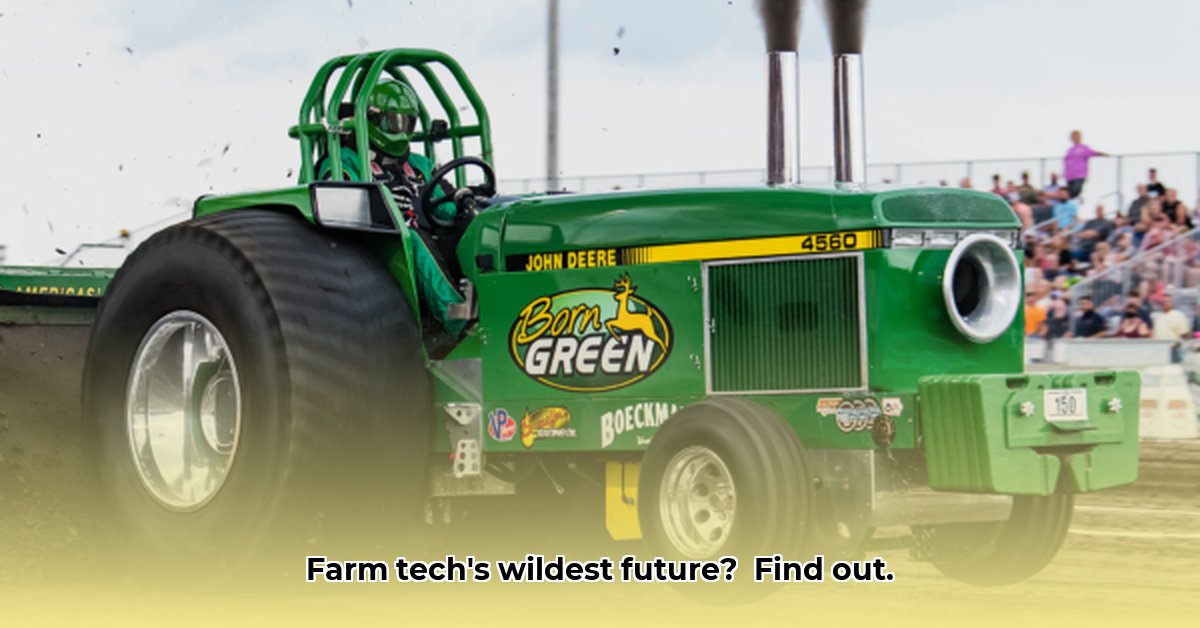
The Thrilling World of Super Stock Tractor Pulling
The roar of the crowd, the smell of burnt diesel, and the earth-shaking rumble of colossal machines—this is the world of super stock tractor pulling. Forget the gentle giants of your childhood; these aren't your average farm tractors. These are heavily modified, intensely powerful machines, pushing engineering limits in thrilling head-to-head competitions. But could this extreme sport hold the key to a more sustainable agricultural future? Let's find out. The sheer power and precision engineering on display are captivating, transforming what might seem like a simple pulling contest into a showcase of cutting-edge technology. Isn't it fascinating how such a seemingly niche competition could impact our food production systems? For more Wisconsin tractor pulls, check out this website.
Super Stock Diesel, a popular class, exemplifies the intense modifications. These aren't just powerful; they're meticulously engineered for a single purpose: pulling a weighted sled as far as possible. Each pull is a test of man and machine, a display of engineering prowess and fierce competition.
Technological Advancements Unveiled: From Racetrack to Farm Field
What makes super stock pullers so extraordinary? It's a sophisticated interplay of highly advanced systems. Their engines, far from stock, are highly modified powerhouses. Massive turbochargers force air into cylinders, and advanced fuel injection systems precisely meter fuel for maximum power—horsepower figures that would impress even the most powerful sports cars. But raw power needs traction. Specialized tires with massive treads ensure maximum grip. Clever weight distribution efficiently transfers power, preventing wheelspin and maximizing pulling force. The chassis, built to withstand incredible forces, is engineered with immense strength and rigidity.
How do these translate to farming? Consider this: the highly efficient engines developed for pulling could lead to fuel-efficient farm tractors, reducing costs and environmental impact. Advanced traction systems designed for maximum grip on a pulling track could significantly improve the performance of farm tractors, leading to better fuel economy and less soil compaction. Finally, the robust construction and superior durability of these competition tractors suggest the potential for building longer-lasting, more reliable agricultural machinery. But rigorous research is necessary to fully quantify these benefits.
Implications for Sustainable Agriculture: Efficiency, Durability, and the Environment
The potential benefits for sustainable agriculture are significant. Fuel-efficient tractors directly reduce greenhouse gas emissions and operational costs. Increased durability means less frequent replacements, minimizing waste and resource consumption. However, while early indications are promising, comprehensive research is crucial to fully assess the long-term environmental impact and confirm these improvements across different farming conditions. This detailed examination is vital to making informed decisions about technology adoption.
Actionable Steps for Stakeholders: A Path Towards Sustainable Farming
Realizing the potential of these technological advancements requires collaborative action.
Manufacturers: Analyze competition data to identify and adapt design innovations for agricultural equipment. Invest in R&D to integrate these technologies into new farm machinery. This proactive approach could lead to a market advantage and contribute to greener farming.
Farmers: Stay informed about advancements and their potential benefits. Consider adopting new tractor models incorporating competition-tested technologies, ensuring cost-effectiveness and compatibility with existing farming practices. This could boost productivity and profitability while reducing environmental impact.
Researchers: Conduct comparative studies to analyze the potential for technology transfer and evaluate the long-term effects on sustainable agriculture. Supporting this research is critical for quantifying the benefits and informing future development.
Government Agencies: Provide funding for research and technology transfer initiatives. Develop policies that incentivize the adoption of environmentally friendly and efficient farm equipment. Government support fosters innovation and guides the market toward more sustainable options.
Conclusion: Pulling Towards a Greener Future
Super stock tractor pulling, while seemingly a world apart from farming, offers a unique testing ground for agricultural innovation. The intense competition pushes engineering boundaries, leading to advancements with the potential to revolutionize farming. While further research is needed to fully explore the implications, the potential benefits—increased efficiency, enhanced durability, and reduced environmental impact—are compelling. The future of sustainable agriculture may indeed be pulling into view.